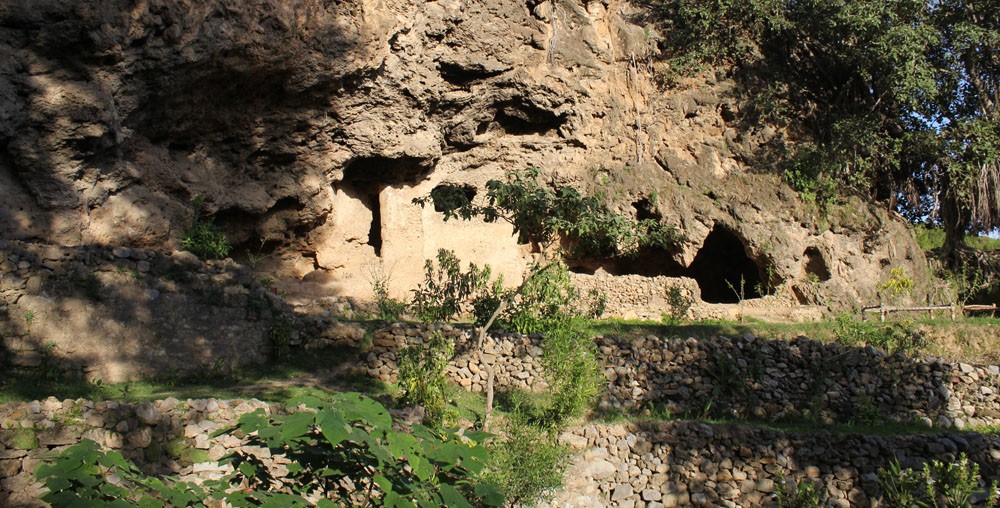
As the capital expands, it endangers the archeological remains in the heart of Gandhara civilisation

Although Islamabad has the reputation of being one of the youngest cities in Pakistan, it stands in the heartland of Gandharan civilisation, Taxila.
The exact Persian translation of Taxila is Margalla.
Margalla Hills are the cultural repositories of the past civilisations that have not been studied properly by archeologists or cultural historians in the past. This is where many of these high-value cultural sites are located.
Islamabad is a modern city planned by a Greek architect and town planner, Constantinos Apostolou Doxiadis in the 1960s. All major government buildings in the city are credited to a generation of international architects. However, the city has been built without being conscious to its ancient and medieval cultural heritage.
There are reasonable gaps in archeological research on Taxila that help us understand why these high-value sites were never incorporated in planning this city.
The heritage sites in Islamabad under imminent danger include sarais, temples, mosques, forts, graveyards, mounds, sacred structures, ponds, trees, caves, mounds and stupas.
As a direct result of this, there is no cultural consciousness of its heritage, and Capital Development Authority (CDA) rarely acknowledges the cultural heritage of the city. The Federal Department of Archaeology and Museums, that has jurisdiction over heritage sites, gives greater attention to sites that are already documented and those that are on the World Heritage List.
This is in brief the academic, cultural and governance context in which one should locate how these high-value archeological sites are now being threatened with total annihilation.
What apparently separates Taxila from Islamabad is the lush green mountain range, the famous Margalla Hills.
In the words of great scholar, Ahmad Hasan Dani, "the ruins of Taxila are scattered on its western slope while Islamabad, the present capital of Pakistan, spreads downs its eastern slope." It is important to know that lower elevations of Margalla Hills did not present insurmountable barriers for the residents of Taxila to travel through the hills, given the numerous passes through the mountains, which have also played a key role in trade, war, and migration.
The Margalla hills are known to have provided sanctuary to the residents of Taxila. In case of attack from the plains, they used to recede in the mountains in the valleys of Margalla Hills and further on to Kashmir. In times of peace, traders and pilgrims would cross the Margalla Hills through numerous passes for their movement in and out of Taxila. Given the geographical proximity and not distance as commonly perceived, the chances of extension of Ghandharan settlements into the Margalla Hills and Islamabad are substantial.
Among the areas that require critical attention are the villages and settlements near the foothills of Margalla, such as Shah Allah Ditta village (entered in colonial gazetters as Shalditta) which borders D-12 sector in Islamabad.
Being located on what has been called "the old road to Rawalpindi" by Alexander Cunningham, a British archaeologist, Shalditta was the halting point for the caravans entering or departing the Margalla Hills.
From the eastern slopes of Shah Allah Ditta, travellers arrived at Giri or Khurram in Taxila, located on the western slopes of Margalla Hills.
Drawing on the archeological probability model, it is likely that the ancient Ghandhran sites such as monasteries and stupas and other archeological structures of medieval periods, such as temples, sarais and ponds must have existed along the caravan paths and roads.
The natural caves at the outskirts of the village are known as Buddhist caves. On the basis of evidence found in the form of wall paintings and potsherds, archaeologists believe Buddhist monks once inhabited them. There is a spring in front of the caves, and water gathers in a pool which feeds a garden called Sadhu ka Bagh (the Garden of Saint) and the whole village.
A stupa that is partly damaged, dating back to Kushan period, is located on the way to Shalditta Pass, some 2km from the Bhuddist caves. A short distance from the stupa is a large pond, at a place called Bandh Faqiran (Pond of Saints) with a small mosque on its bank, attributed to Ghaznavi period. All along the Shalditta Pass, there are visible signs of unidentified structures that require closer inspection as it might reveal something significant.
Islamabad is now considered the fastest growing city in Pakistan and the pace of development threatens to destroy our cultural treasures and heritage. Only a few sites that lie within the Margalla Hills National Park, a protected area, are safe from destruction.
Saving these cultural sites has to become a national priority without delay. It is of historic significance that Islamabad is not only in the neighbourhood of the principal centre of Ghandharan civilisation -- Cunningham called Taxila or Taksha-sila, that is the hill capital of the Takshakas -- but perhaps a living successor to it today!